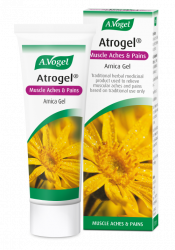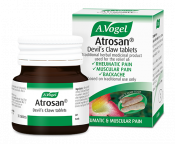What is causing my knee pain?
Joints are the point at which two bones meet, with their key role being to facilitate movement. There are various joints in the human body but the knee joints are known as synovial joints.
A synovial joint allows for movement in various directions (described as being freely moving) as the end of the bone is surrounded by synovial fluid which is lubricating and provides cushioning. For extra protection, the bone in a synovial joint has cartilage covering the end of it which is also cushioning, prevents wear-and-tear and avoids friction.
On occasion, things can go wrong in the knee joint and pain develops. There are a whole range of reasons for knee pain but some of the most common are:
- Injury
- Arthritis
- Menopause
- Sport
- Other health conditions
Here I have a look at these issues in a little more depth and give you information on tackling joint pain going forward.
1. Injury
Let's start with the most obvious. Have you had a fall, trip or bump recently that could be the root cause of your pain?
After a fall, the adrenaline (as well as embarrassment, in some cases!) can mean that we spring back up straight away. Sometimes it isn't until we get home and inspect our injuries that we realise damage has been done. Sometimes the pain will only become apparent when you go to do a particular activity, hence it doesn't become noticeable straight away.
There are various injuries that can occur in the knees:
- Bruising – This is really common as the knees tend to take the impact of a fall. Bruising occurs when tiny capillaries under the skin burst. The blood has nowhere to go, hence the skin turns a shocking purple/blue colour.
- A tear to the ligaments or tendons - Tendons and ligaments are both strong, connective tissues made of collagen. Ligaments help to connect one bone to another but are also very good at absorbing shock, which prevents damage to the joints. Conversely, tendons connect muscle to bone and help movement by allowing the muscle to pull on the bone. Injury to these areas can cause severe pain and difficulty moving the joint.
- Dislocation – After severe impact, the joint changes shape, causing severe pain.
What can you do?Things like bruising, or general achiness of the knee joints, may benefit from Atrogel Arnica Gel. However, for more severe, long-lasting pain, it would be best to consult a GP or physiotherapist to work out the cause of your discomfort and the best form of treatment. |
2. Arthritis
I have no doubt that you are well aware of arthritis and how it can contribute to joint pain. However, did you know there are over 200 types of arthritis? This includes hormonal (menopausal arthritis), autoimmune (rheumatoid arthritis), metabolic (gout) and wear and tear (osteoarthritis).
Rheumatoid is perhaps the most common form of arthritis and occurs when the immune system mistakenly attacks the cells lining the joint. This can result in pain, swelling and stiffness, plus, over time, the cartilage and bone in the joint may become damaged.
Osteoarthrosis, another of the more significant forms of arthritis, occurs when cartilage at the end of the joint breaks down. It causes severe pain and limited movement. For some sufferers, walking long distances and some of the more strenuous types of exercise will be off the cards.
Previous joint injury can predispose people to wear and tear in the joint years later, plus those already with inflammatory conditions can see similar symptoms develop in new joints.
What can you do?You’ll need to know what type of arthritis you have in order to treat it most effectively so speak to your doctor if you haven’t already done so. If you already have a diagnosis and want to address the issue, Atrogel may help to provide 'on the spot' relief - so localised to where you apply it. It typically shows its effects within 20-30 minutes so is a good option when a flare-up occurs. Atrosan Devil’s Claw can also help with pain and inflammation, but this has a cumulative effect so you’ll have to take them for a good few weeks for the effects to show. Other than this, take oily fish 3x a week and make lots of colourful veg and nuts, seeds and avocados dietary priorities. You may wish to try cutting out the 'nightshade' family for a month to see if this makes a difference. Many people report dramatic improvement when they remove these foods, which include potato, tomato, aubergine and peppers. There are lots of ideas for new meals on our recipe hub. |
3. Menopause
 I spoke to A.Vogel's Menopause Advisor Eileen Durward on this one, and she said:
I spoke to A.Vogel's Menopause Advisor Eileen Durward on this one, and she said:
"Joint pain is a very common symptom in the menopause as falling oestrogen levels can affect the hydration of the joints, causing inflammation and pain."
If you want to find out more about this topic and get Eileen's top tips for dealing with it, check out her video. In the meantime, I have picked out a few key snippets that you can find below.
What can you do?Eileen recommends sensible levels of exercise if you are experiencing joint pain during the menopause, but warns against doing too much: “The menopause puts tremendous strain on the body and, if you push yourself too hard, this can cause fatigue and also irritate the joints further. This is one time of our lives when it is important to wind down a little to allow the body to adapt to this new phase!” Once again, you may find that Devil's Claw and Arnica Gel helpful at this time to help ease your joint pain. It is also a good idea to check in on your diet. Caffeine, high salt and sugar foods, plus processed foods can all irritate the joints further. |
4. Sport
Your favourite hobby may also be to blame for the development of joint pain.
Running, for one, is very hard on the joints, so problems may develop if you do this consistently. This is particularly likely if you are doing lots of running without good technique, you are running on hard ground much of the time, or your trainers aren't offering sufficient support.
Activities like squash or tennis also cause twisting and turning of the knee joints, and the likelihood of injury here is high.
What can you do?If you are doing sport on a regular basis, it might be a good idea to join a club where you can get tips from experienced coaches and fellow club-goers on your technique, as well as the kind of gear that would best suit your activity levels and posture. With the likes of running, specialist stores often offer fittings for shoes to help you get the most support. If the issue is just a temporary issue, perhaps due to over-doing it during a session, then, once again, Atrogel may be appropriate to provide a little relief. Alongside this, applying some ice and resting up are important. To avoid injury in the future, make sure you warm up with lots of gentle stretches before getting stuck into your main activity. It’s also important to cool down afterward too. |
My Top Tip:

Apply Atrogel Arnica Gel up to four times daily to help with aches and pains, including joint pain.
"Great product really good for arthritic pain."

5. Other conditions
Of course, there are many other conditions that can affect the knee joints and lead to pain. Here are a couple but bear in mind that any persistent, undiagnosed pain should always be investigated by a doctor.
- Bursitis – causes pain and swelling in the joint and is usually caused by repetitive movements. Doing quite a bit of DIY such as painting, for example, may trigger the issue.
- Gout – again, leads to pain and swelling in the joints, caused by the formation of crystals around the joint.
- Psoriatic arthritis – joint pain that affects sufferers of psoriasis.
- Lupus – the immune system mistakenly turns on healthy cells and attacks them.
My Self-Care Tip: Exercises for joint pain
Check out my video for advice on what kind of exercises you could consider when you have knee pain.





 Looking for a treatment to relieve pain in conditions such as muscle aches or pains, stiffness, rheumatic pain or after sporting injuries?
Looking for a treatment to relieve pain in conditions such as muscle aches or pains, stiffness, rheumatic pain or after sporting injuries?

